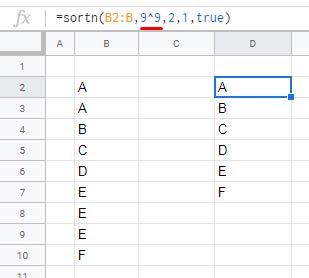There are two functions to multiply a number by a Power in Google Sheets. They are Power() and Pow(). Other than these two functions there is the Caret ^ Symbol that does the same thing.
While the Power() is categorized as a Math function in Google Sheets the Pow() is categorized under Operator.
Let me explain to you how to multiply a number by a Power in Google Sheets using the functions and the symbol.
How to Multiply a Number by a Power in Google Sheets
Use the Power, Pow functions or the Caret to return a base number raised to an exponent power.
When you are multiplying a number by a Power, what you are really doing is multiplying that number (base) by itself a number of times equal to the power (exponent).
Multiply a Number by a Power Using the Power() Function
Syntax:
POWER(base, exponent)Example to the Usage of Power Function in Google Sheets:
=POWER(10,3)The result would be 1000 which is equal to;
=10*10*10Multiply a Number by a Power Using the Pow() Function
You can replicate the same example using the Pow() function in Google Sheets. Actually, both Power and Pow are the same.
As far as I know, there is only the Power() function in Excel. But I am unsure about the availability in the latest iteration of Excel.
Syntax:
POW(base, exponent)Example to the Usage of Pow Function in Google Sheets:
=POW(10,3)Multiply a Number by a Power Using the Caret
This works both in Excel and Google Sheets. You can raise a number to a power using ^ as below.
=10^3The above are the 3 options to multiply a number by a Power in Google Sheets.
Points to be Noted:
The above two functions and the Caret work in an Array too. See the example below where the ArrayFormula also got invloved.

The next point is about the negative numbers as the base in Power.
If the base is negative the exponent must be integer only. Otherwise, the formula would return the #NUM! error saying “POWER evaluates to an imaginary number”

Fun Tip on the use of Power, Pow or the ^ in Other Formulas
I normally use the caret in Query header, Array_Constrain as well as in the SORTN functions when I want the formula to return all the rows.
Sometimes, it may not be possible to specify the number of rows to be returned by a Formula after processing the source. In such cases, we can virtually say “All” using the Power function. Here is one such example.
Caret in SORTN:
In the below example, I have used the SORTN to return sorted ‘n’ unique values.

Since I am unsure about the ‘n’ after unique, I have used the Caret.
Note: In the above example the number 2 immediately after the power is the Tie mode.
Must Read: SORTN Tie Modes in Google Sheets – The Four Tiebreakers.
See the use of Power in Query – The Flexible Array Formula to Join Columns in Google Sheets.





















